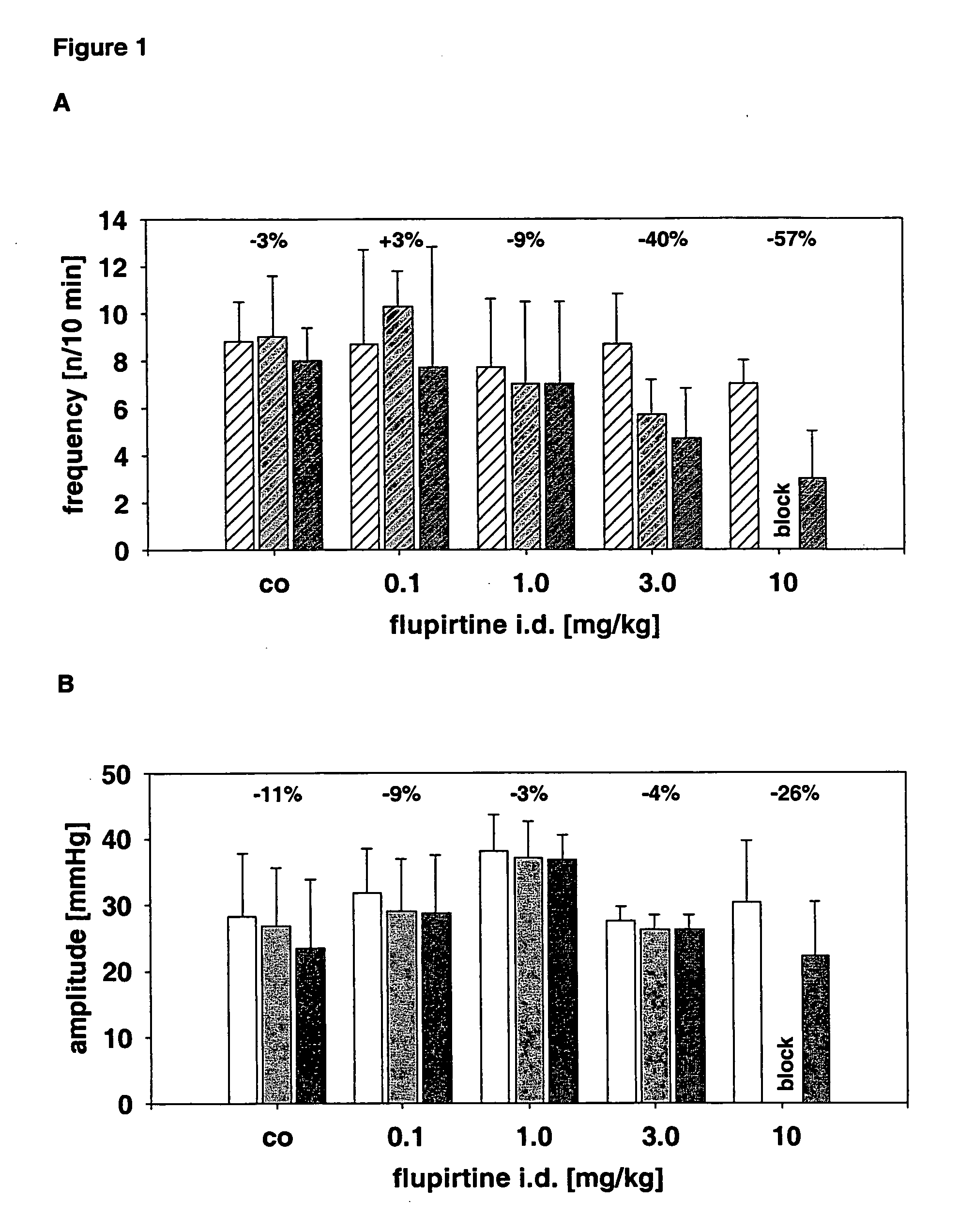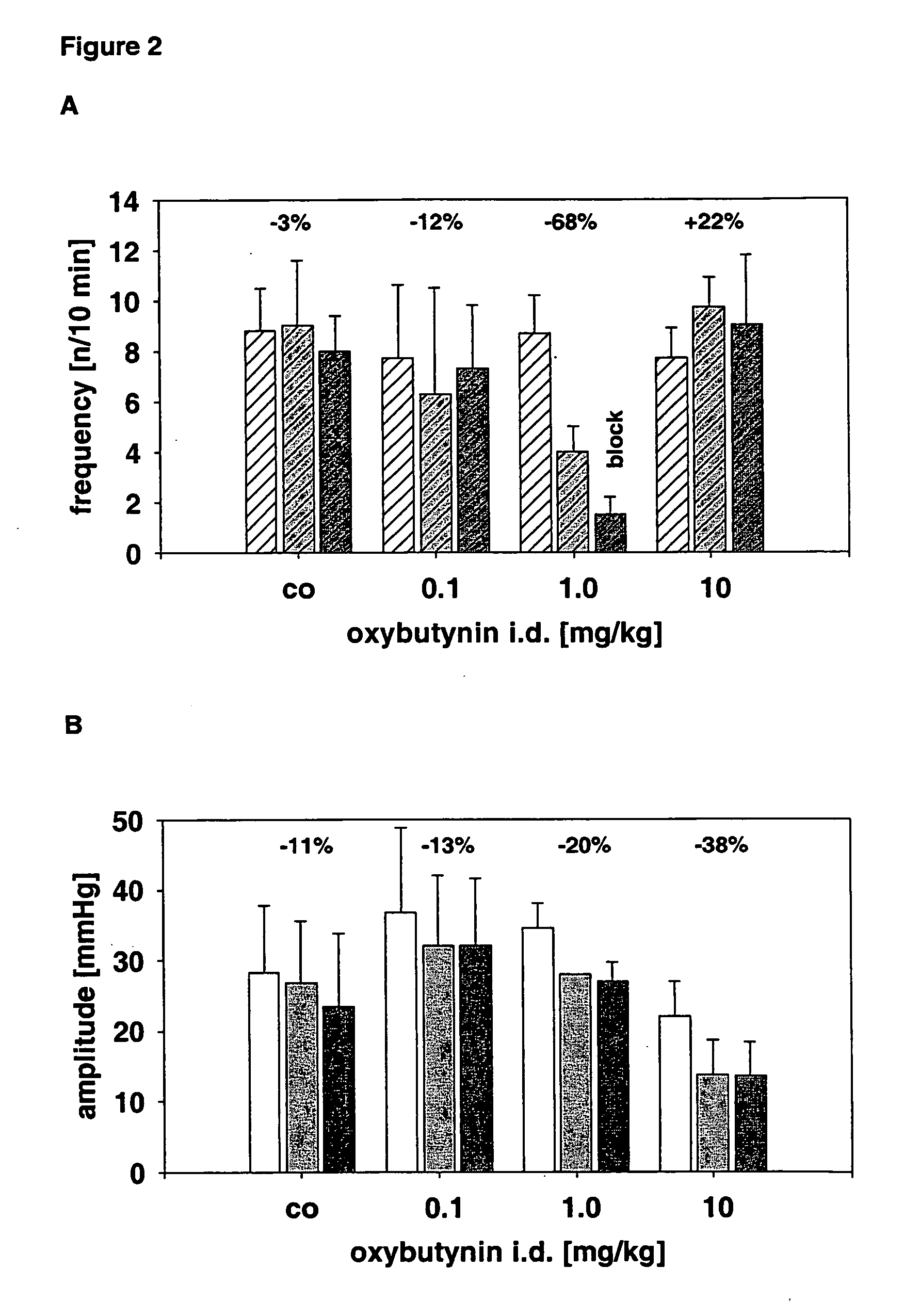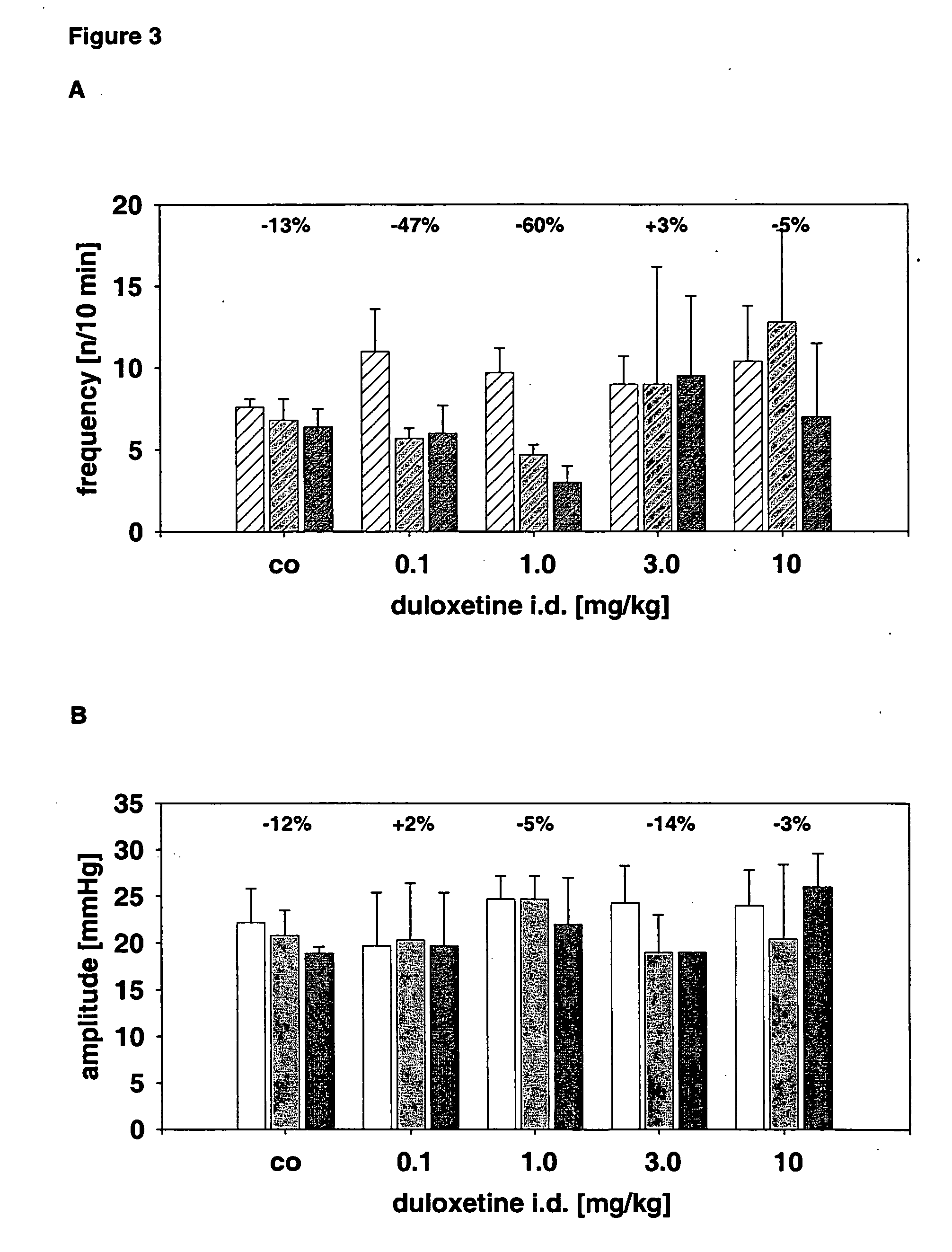Use of the non-opiate analgesic drug flupirtine of the treatment of overactive bladder and associated diseases including urge incontinence, urinary flow problems as a result of prostate hyperplasia and irritable bowl syndrome
a non-opiate analgesic and bladder disease technology, applied in the direction of drug compositions, biocide, heterocyclic compound active ingredients, etc., can solve the problems of reducing the function of the sphincter, reducing the sphincter tonus, and affecting the function of the detrusor
- Summary
- Abstract
- Description
- Claims
- Application Information
AI Technical Summary
Benefits of technology
Problems solved by technology
Method used
Image
Examples
example
Flupirtine in a Rat Model of Overactive Bladder (OAB)
1 Introduction
[0060] Overactive bladder (OAB) is a serious condition for which no effective treatment without undesirable side effects exists today. OAB is often cause of urinary incontinence but can be frequently seen also without incontinence as urgency syndrome. OAB may be a symptom of a complex disease such as benign prostate hyperplasia or Parkinson's disease, but exists also as a disease of its own. OAB can be seen in humans at all ages including children and elderly.
[0061] If conservative management forms of treatment fail, pharmacotherapy, currently in most cases in the form of anticholinergic drugs (e.g. oxybutynin hydrochloride) is initiated. Oxybutynin hydrochloride, a drug with both anticholinergic and calcium antagonistic effects, decreases peripherally bladder contractility, but side effects like inhibition of saliva production and increased residual urine content are present (Wein, Exp. Opin Invest Drugs 10:65-8...
PUM
| Property | Measurement | Unit |
|---|---|---|
| body temperature | aaaaa | aaaaa |
| volume | aaaaa | aaaaa |
| blood pressure | aaaaa | aaaaa |
Abstract
Description
Claims
Application Information
 Login to View More
Login to View More - R&D
- Intellectual Property
- Life Sciences
- Materials
- Tech Scout
- Unparalleled Data Quality
- Higher Quality Content
- 60% Fewer Hallucinations
Browse by: Latest US Patents, China's latest patents, Technical Efficacy Thesaurus, Application Domain, Technology Topic, Popular Technical Reports.
© 2025 PatSnap. All rights reserved.Legal|Privacy policy|Modern Slavery Act Transparency Statement|Sitemap|About US| Contact US: help@patsnap.com



